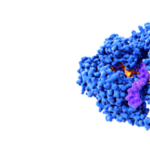To promote greater transparency and public trust in biomedical research, the National Institutes of Health (NIH) has announced a significant update to its implementation of the NIH Guidelines for Research Involving Recombinant or Synthetic Nucleic Acid Molecules. Effective June 1, 2025, the NIH will begin publicly posting key information about Institutional Biosafety Committees (IBCs) and expects institutions to do the same with IBC meeting minutes.
What Are IBCs?
Institutional Biosafety Committees (IBCs) are local oversight bodies that review and monitor research involving recombinant or synthetic nucleic acids, such as genetically modified organisms or gene-editing technologies like CRISPR. These committees play a vital role in ensuring such research is conducted safely, ethically, and in compliance with federal guidelines.
IBCs typically include scientists, biosafety professionals, and unaffiliated community members. Together, they evaluate research proposals for potential risks to researchers, the public, and the environment. Their work helps to uphold the principles of the Responsible Conduct of Research (RCR) by ensuring that cutting-edge science progresses with appropriate safety and accountability.
What’s Changing in 2025?
Beginning June 1, 2025:
- Public Rosters: The NIH Office of Science Policy (OSP) will post the names and roles of all members of active IBCs, as well as contact information for the IBC Chair, Biological Safety Officer (BSO), and primary IBC Contact.
- Public Meeting Minutes: Institutions should publicly post approved IBC meeting minutes from meetings held on or after June 1, 2025. They should share them promptly after approval and include only information appropriate for public release (redacted as necessary for privacy or proprietary concerns, following the NIH Guidelines (Section IV-B-2-a-(6)).)
Minutes from meetings prior to June 1, 2025, are not subject to this new requirement but must still be available upon request from the public.
Why This Matters
This update reaffirms NIH’s commitment to transparency, accountability, and public engagement in science. By increasing visibility into biosafety oversight, the NIH and research institutions aim to build trust with the public and demonstrate the integrity of research practices.
IBCs have long been a cornerstone of responsible research involving emerging biotechnologies. With this renewed focus on openness, their role in safeguarding public health and scientific ethics becomes even more prominent.
For more information, visit the NIH Notice.







